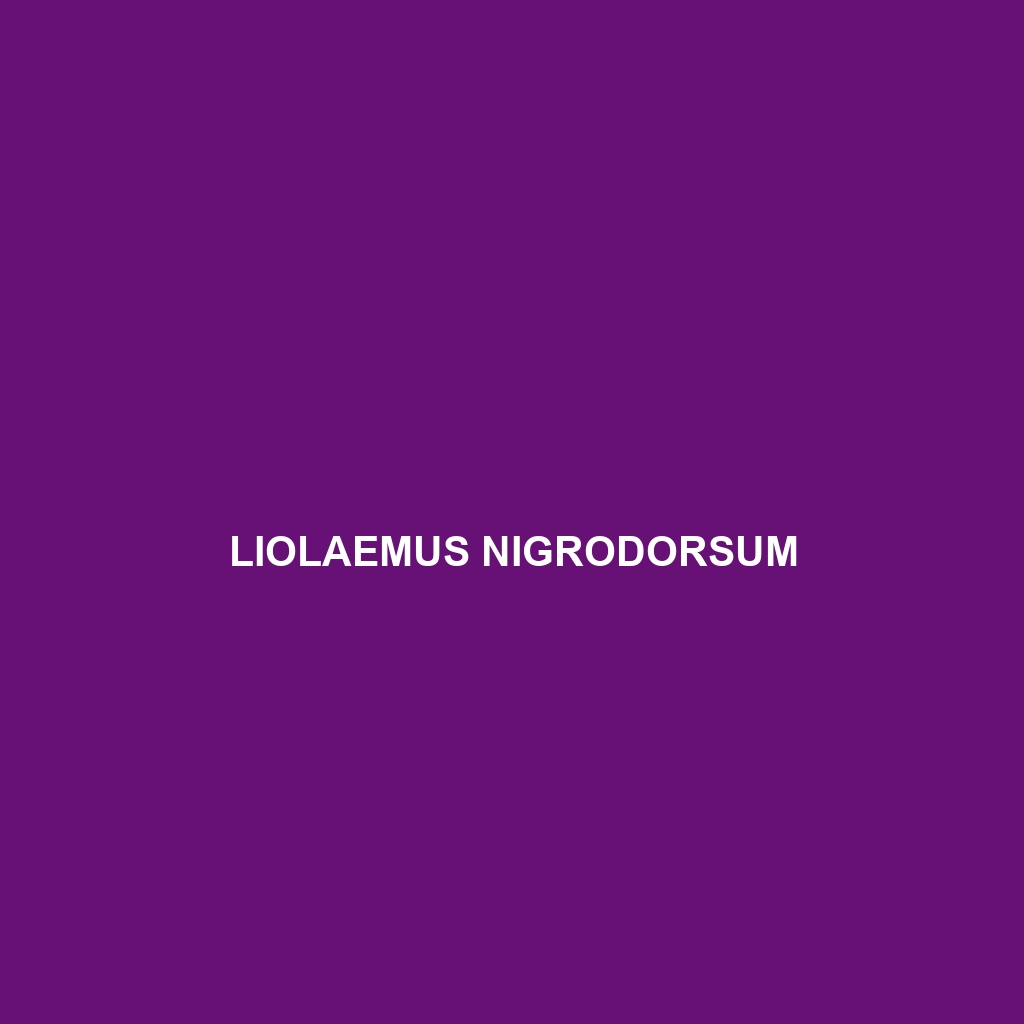Discover the robust lizard, Liolaemus robustus, a vibrant inhabitant of southern South America's temperate forests, known for its agile movements, striking coloration, and unique reproductive strategy of live births. This omnivorous lizard plays a crucial role in its ecosystem by controlling insect populations and supporting biodiversity.
Tag: ovoviviparity
Liolaemus quilmes
Discover the <b>Liolaemus quilmes</b>, a fascinating high-altitude lizard from the Andes known for its distinctive gray-brown coloration, elongated body, and unique diurnal behaviors. This insectivorous species thrives in rocky terrains and grasslands, playing a crucial role in regulating insect populations and maintaining ecological balance.
Liolaemus nigrodorsum
<p><b>Liolaemus nigrodorsum</b>, commonly known as the black-backed Liolaemus, is a unique lizard native to the southern regions of South America, characterized by its dark grey to black back and agile nature. This insectivorous species thrives in rocky outcrops and scrub habitats, playing a vital role in maintaining ecological balance by controlling pest populations and serving as prey for larger predators.</p>
Liolaemus lopezi
Discover the unique Liolaemus lopezi, or Lopez's Liolaemus, a diurnal lizard native to the Patagonian region of Argentina, thriving in temperate forests, savannas, and rocky outcrops. With a length of 15 to 25 centimeters, this omnivorous species exhibits vibrant mating displays and plays a vital role in its ecosystem by controlling insect populations while serving as prey for larger predators.
Liolaemus gravenhorstii
Discover the fascinating Liolaemus gravenhorstii, or sand lizard, which thrives in the temperate zones of the southern Andes, showcasing a vibrant coloration and remarkable adaptability in diverse habitats. This diurnal insectivore plays a critical role in its ecosystem by controlling insect populations and serving as prey for larger predators.
Liolaemus exploratorum
Liolaemus exploratorum is a medium-sized lizard native to Patagonia, characterized by its variable coloration and diurnal behavior. Primarily insectivorous, this species demonstrates unique reproductive traits and plays a crucial role in maintaining ecosystem balance as both predator and prey.
Liolaemus chlorostictus
Introducing the Green-spotted Liolaemus (Liolaemus chlorostictus), a vibrant medium-sized lizard found in the temperate forests and savannas of southern South America, showcasing a striking green body adorned with dark spots. This insectivorous species exhibits diurnal behavior and plays a crucial role in its ecosystem, contributing to biodiversity by controlling insect populations.
Limnophis branchi
The Limnophis branchi, also known as the Branch's Water Snake, is a striking carnivorous species typically growing 1.5 to 2 meters in length, featuring vibrant scales and a flattened head for effective camouflage. Found in diverse habitats like tropical rainforests and savannas, this nocturnal snake plays a vital role in its ecosystem as both predator and prey.
Liburnascincus scirtetis
<p><b>Liburnascincus scirtetis</b>, or the Scirtetis skink, is a vibrant insectivorous lizard found in tropical rainforests and coastal savannas of the southwestern Pacific. Notable for its streamlined body, unique coloration, and ability to regenerate its tail, this species plays a vital role in maintaining insect population balance and promoting biodiversity in its ecosystem.</p>
Lerista gerrardii
Discover the Lerista gerrardii, or Gerrard's skink, a small to medium-sized, diurnal insectivore found in southeastern Australia. With its smooth, shiny scales and unique adaptability to diverse habitats, this skink plays a vital role in maintaining ecosystem balance.









